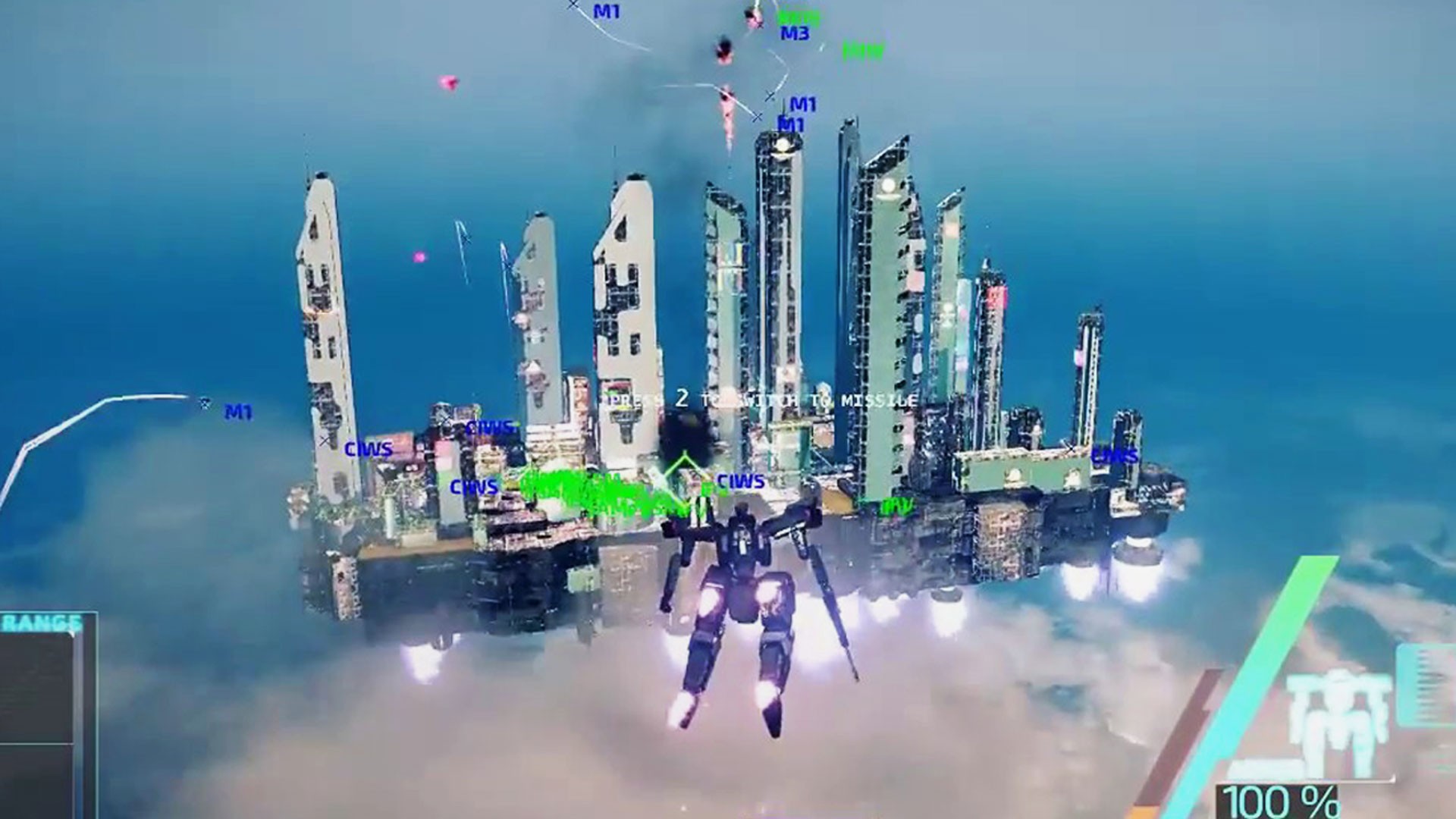People were made pretty uncomfortable this week after the first trailer for Alita: Battle Angel hit the web. It’s directed by Robert Rodriguez (Desperado, Sin City) and produced by James Cameron, so a distinct visual style is a give-in. However, the trailer showed off a style that gave viewers a weird sense of the uncanny valley, mainly in Alita’s large, unnatural anime eyes.We haven’t seen the movie yet, so we can’t fully comment on whether the eye choice has any merit, but from the trailer we can speculate a few things. For one, while there are other robots shown, none of them have oversized eyes. Secondly, while the cast is multicultural, there is little that ties into the manga’s Japanese origins.So why give Alita what are known as “anime eyes?” It’s a strange choice not just because it looks uncanny, but because the movie doesn’t seem to understand why manga and anime use them.
Article continues below.
The interesting thing is that on its surface, anime eyes aren’t too different than the ones used in American cartoons. That’s because a lot of early manga was influenced by Western animation styles. Japan has a long history of isolationism, which I’m not going to get into here, but with the arrival of Western civilizations came the proliferation of Western culture in the East. Japan was churning out animation in the early parts of the 20th century and into World War II, where some of the earliest examples of “anime” were used as propaganda.After the war, however, Japan experienced a great economic boom, which included a pop culture explosion. This was thanks in part to the American occupation of the country after 1945, but also because of a postwar fatigue. According to William M. Tsutsui, from the Association for Asian Studies, post-war Japan just wanted to have some fun, writing “a tired, dispirited, and generally impoverished populace sought mass entertainment as an escape from the challenges of everyday life.However, the distinct anime style as we know it today can be traced back largely to one person. Osamu Tezuka, widely considered to be the “godfather of manga,” was heavily influenced by Walt Disney and Max Fleischer, the creator of Betty Boop. He was said to have been particularly obsessed with Bambi, which he watched over 80 times. If you even just glance at Betty or early Disney characters like Bambi, you can see the resemblance with anime. Both feature characters with oversized heads and large, expressive eyes.Tezuka went on to create the precursor for modern-day anime: Astro Boy, the story of an android that fights crime. The main character is the epitome of this art style, with large, expressive eyes that carried over to his multiple incarnations. It debuted in 1963 in Japan and has been recreated multiple times since.Anime eyes have evolved over the past half-century, with certain rules being assigned to different sizes. Large eyes are normally assigned to female characters, since they are depicted as being more expressive. Similarly, stories that are set to reach a largely female demographic or a younger one also tend to feature characters with larger eyes, whether they’re male or female. Anime or manga that are more action-oriented, dramatic, or edgy tend to feature characters with narrower eyes, although women characters are still drawn with slightly larger eyes. Villains are also normally drawn with narrower eyes.Japan latched onto this style partially as a natural byproduct of American occupation and influence, but also as a way to market Western material back at the source. Japanese history wasn’t washed away by Americanization. In fact, the combining of the two resulted in a distinctly original style and economy. For example, there wasn’t enough metal in Japan post-World War II, so tin cans and other scrap were used to make recreations of American Jeeps, which became incredibly popular.However, the cutesy anime style was also the result of a marketing tool. Old Japanese art features characters that looked Japanese, while postwar art went for something more neutral. After all, it was Western civilizations that turned the Japanese look into a caricature, used in propaganda material during the war. According to Emily Yoshida at the Verge, “After the war, once the Japanese face had become synonymous in the western imagination with untrustworthiness and cruelty, toymakers, character empires… adopted a more benign countenance.”Above: The trailer for the Battle Angel Alita anime.So the Battle Angel Alita manga, first published in 1990, is a byproduct of decades of Japan creating its own unique art style and media. There’s nothing visually distinguishable about Alita as a character. Her large eyes aren’t special, nor are they a product of her robotic nature in the manga. They’re an artistic choice that puts her squarely in a decades-long tradition, that makes the Alita story distinctly Japanese and distinctly anime.Nowhere in Alita does the character’s large anime eyes signify her cyborg status since other characters have the same features. However, in this movie she seems to be the only one. But why? Why has Rodriguez and the rest of the creators decided on this choice? From the trailer, we can guess that it’s another way to “other” Alita from the rest of the characters, who are all played by real actors with few changes to their actual faces. She’s not the only robot in the story, yet aspects of her appearance -- from her robotic limbs to her eyes -- are what signify her as different from the rest.From what we can gather, it looks less like her uncomfortable anime eyes will have a significance, but that they were put there just to signify that the movie is inspired by manga. It signals to the audience “yes this is Japanese and yes we’re not going to try and erase the source material.”Yet that’s what they’re doing. Alita’s eyes are the only thing that is distinctly Japanese about the movie, which features no main Japanese actors or characters. Battle Angel Alita takes place in a dystopian future America, so there’s no in-story reason why the characters would need to be Japanese, but they’re named as such in the comic. Like Ghost in the Shell, another recent Americanized live-action anime adaptation, the characteristics are there without any awareness of why they are.Alita looks to be going down the same path as Ghost in the Shell, not only in its whitewashed nature but in how fails to realize where the art came from in the first place.
Advertisement
Article continues below.

The interesting thing is that on its surface, anime eyes aren’t too different than the ones used in American cartoons. That’s because a lot of early manga was influenced by Western animation styles. Japan has a long history of isolationism, which I’m not going to get into here, but with the arrival of Western civilizations came the proliferation of Western culture in the East. Japan was churning out animation in the early parts of the 20th century and into World War II, where some of the earliest examples of “anime” were used as propaganda.After the war, however, Japan experienced a great economic boom, which included a pop culture explosion. This was thanks in part to the American occupation of the country after 1945, but also because of a postwar fatigue. According to William M. Tsutsui, from the Association for Asian Studies, post-war Japan just wanted to have some fun, writing “a tired, dispirited, and generally impoverished populace sought mass entertainment as an escape from the challenges of everyday life.However, the distinct anime style as we know it today can be traced back largely to one person. Osamu Tezuka, widely considered to be the “godfather of manga,” was heavily influenced by Walt Disney and Max Fleischer, the creator of Betty Boop. He was said to have been particularly obsessed with Bambi, which he watched over 80 times. If you even just glance at Betty or early Disney characters like Bambi, you can see the resemblance with anime. Both feature characters with oversized heads and large, expressive eyes.
Advertisement
Advertisement
